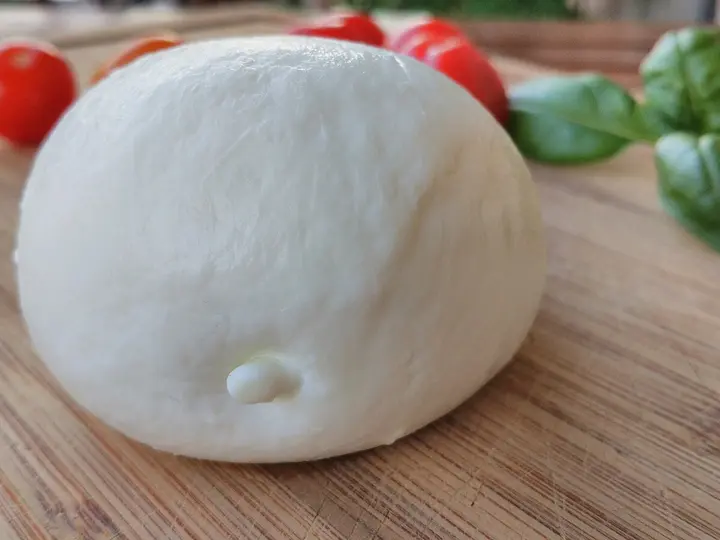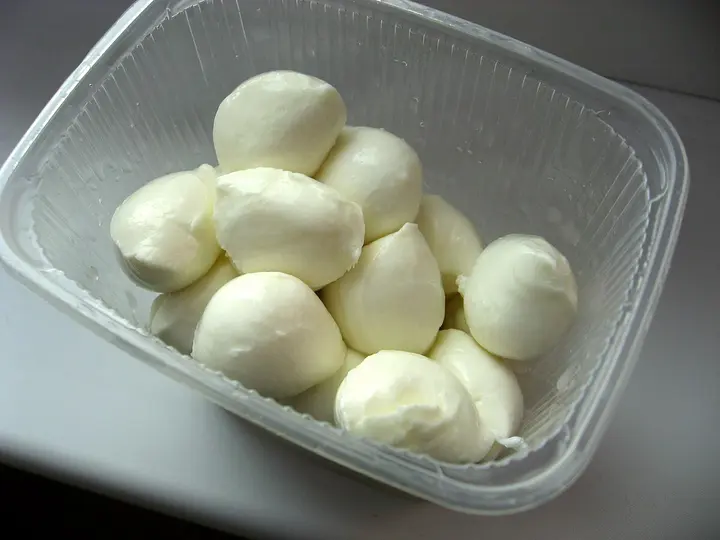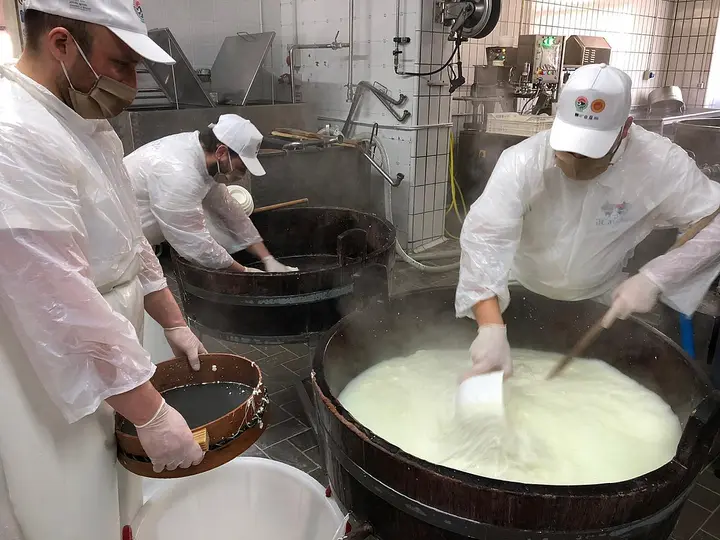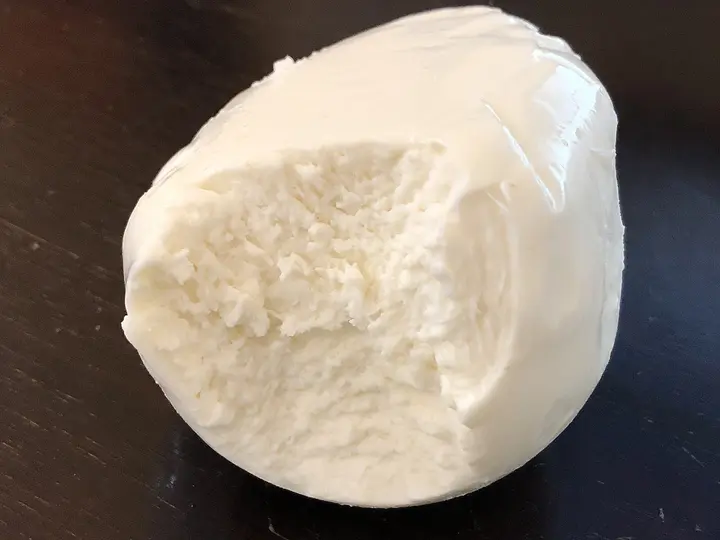Mozzarella Guide

Mozzarella is one of the famous cheeses around the world, it is very popular in many international cuisines, and is used to prepare a variety of delicious dishes. Our comprehensive mozzarella guide is a valuable source for everything you need to know about this delicious type of cheese. In this article, we will review comprehensive information about the mozzarella guide as well as some ideas to use in delicious recipes.
Show key points
- Mozzarella, originating from Italy's Campania region in the 16th century, is renowned worldwide for its meltability and distinctive cheese threads.
- In 1998, the European Union granted mozzarella protected designation of origin status, ensuring it must be traditionally made in specific Italian areas.
- There are three main types of mozzarella—classic, flow, and buffalo—each offering a unique texture and flavor profile to suit various culinary needs.
- ADVERTISEMENT
- When selecting mozzarella, consider freshness, elasticity, color, aroma, and the credibility of the producer to ensure top quality.
- Homemade mozzarella can be prepared using fresh milk, acidic agents like lemon juice, and traditional methods such as salted water baths or automatic cheese makers.
- Mozzarella's versatility allows it to be used in various dishes beyond pizza, including salads, sandwiches, stuffed chicken, and mini bruschetta pizzas.
- Proper cutting and serving techniques—such as using a sharp knife, maintaining firmness, and briefly chilling slices—enhance the presentation and texture of mozzarella in dishes.
History of mozzarella and its Italian origins.

Mozzarella has a long history dating back to the 16th century in Italy and is considered one of the most famous and widespread cheeses in the world. The secret behind mozzarella's fame is due to its quality, its ability to melt perfectly and form the pleasant cheese threads that are characteristic of it.
Recommend
Mozzarella has strong Italian origins that stretch back to the Campania region, where there are many tales and legends that tell the story of the discovery of this delicious cheese. Mozzarella dates back to the 16th century, with the earliest references to the use of braided, low-fat whole milk in cheese making.
In 1998, mozzarella received protection of origin by the European Union, making it a European protected cheese of origin. The conditions for the protection of origin stipulate that the original mozzarella is produced only in specific areas of Italy using traditional methods.
If you want to try the original mozzarella, you will find that they come in three main types: classic mozzarella, flow-mozzarella and mozzarella di buffalo. The most famous and widespread classic mozzarella, it is characterized by its pleasant taste, optimal moisture content and sticky texture. Mozzarella Flo has a soft texture and rich natural taste, while mozzarella di buffalo has a sharp taste and creamy texture.
In short, the history of mozzarella and its Italian origins reflect the value of this famous cheese and its unique flavor. Enjoy the original taste of mozzarella and listen to the genius and technique that has been developed throughout the ages to produce this premium cheese.
The characteristics of mozzarella cheese and how to choose it is the best.

Mozzarella is one of the most popular cheeses around the world, and it is characterized by its delicious taste and unique taste. However, there are some important points to consider when choosing mozzarella cheese for the best quality and flavor. We will review some of the characteristics of mozzarella cheese and give some tips to choose the best.
Quality and fresh: Fresh mozzarella cheese is one of the best, as it has a delicious flavor and perfect texture. Make sure that the cheese is fresh and not fading before buying, and this can be checked by noting the condition of the package and the expiration date.
Texture and elasticity: The perfect mozzarella cheese should have a smooth texture and elasticity when torn or cut. A person can do a simple test by trying to tear off a small portion of cheese and see how elastic and disintegrating it is.
Color and appearance: Good mozzarella cheese is usually bright white in color and a homogeneous appearance, without any abnormal pigmentation. Cheese with blue spots or musty appearances should be avoided.
Smell: Good mozzarella cheese is characterized by its fragrant and distinctive aroma. The smell should be natural and palatable, and cheese that smells bad or inappropriate should be avoided.
Trusted producers: The provenance and reputation of the product is also important when choosing mozzarella. It is preferable to obtain the product from well-known and reliable companies to ensure quality and taste.
In short, when choosing the perfect mozzarella, you should pay attention to the quality and freshness, texture and elasticity, color and appearance, smell, and reliable producers. By choosing mozzarella cheese carefully, you will be able to improve the flavor and quality of the dishes in which it is mixed.
Methods of preparing mozzarella cheese at home.

Mozzarella cheese is one of the most popular types of cheese used in many delicious dishes around the world. Instead of buying them in boutiques, you can now discover the secret to preparing them in the comfort of your own home. Here are some creative and easy ways to prepare delicious mozzarella cheese at home.
Use fresh cow's milk: Heat an appropriate amount of fresh cow's milk in a saucepan over medium heat. Too low or too high heat may affect the quality of the cheese. Add lemon juice until a chemical reaction occurs that causes the milk to coagulate and separate the tar from the solid compounds. Remove the custard from heat after the liquid droplets appear and wait until it cools slightly.
Use a mixture of cow's milk and buffalo milk: Try preparing mozzarella cheese using a mixture of cow's milk and buffalo milk, this difference in ingredients gives the cheese a unique taste. You can follow the same steps as above with this mixture.
Use an automated cheese maker: If you are looking for an easier and more effective way to prepare mozzarella cheese at home, you can use the automatic cheese maker machine. This device includes automatic steps for heating milk, preparing solid compounds, and making cheese.
Cheese transit in salted water: One of the traditional methods of preparing mozzarella cheese is what is known as the process of heating the salt. Place the cheese in hot salted water, leave to simmer for a few minutes, then transfer to cold water. This process helps to give the cheese elasticity and characteristic texture.
Discover the joy of preparing delicious mozzarella cheese at home and enjoy the great result. You will find that these simple methods of preparation give you amazing results and add a personal touch to your favorite meals.
The uses of mozzarella in recipes for various dishes.

Mozzarella cheese is not just an addition to pizza and pasta, it can be used in many other recipes to add flavor and delicious texture to dishes. In this section, we will discover some of the distinctive uses of mozzarella in a variety of different dishes.
Crispy Mozzarella Rolls: Wrap the mozzarella slices around sausage or hamburger slices and fry until golden and crispy. This recipe is ideal as an appetizer or snack for children and adults alike.
Caprese Salad: Bring the famous Caprese salad with layers of refreshing tomatoes, sliced mozzarella, basil leaves and a pinch of olive oil. This innovative salad full of fresh flavors will be an ideal choice to serve at parties and parties.
Mozzarella Stuffed Chicken Take: Stuff the chicken thigh with mozzarella slices, parsley herbs and garlic and close the thigh tightly. Grill the chicken until golden and firm. You will get a hearty and nutritious main course that will impress everyone.
Bread stuffed with mozzarella and tomatoes: Cut a piece of bread in half and fill it with mozzarella slices, tomato slices and basil leaves. Grill until browned and melted cheese. This hearty sandwich can be prepared quickly and is the perfect snack for lunch or dinner.
Bruschetta Mozzarella Pizza: Arrange the mozzarella slices, tomato slices and basil leaves on half-planted wooden bars, then bake in the oven until the cheese is melted and the tomatoes are lightly browned. You will get delicious mini pizzas that are an ideal choice to serve at parties and events.
With its versatility and unique taste, mozzarella remains a great choice for many different dishes. Experience its amazing uses and enjoy transforming your daily meals into delicious and filling dishes.
Pro tips: How to cut and serve mozzarella professionally.

When it comes to mozzarella, cutting and serving professionally can make a big difference in the taste and feel of the dishes in which they are used. Here are some valuable tips to improve your skills in cutting and serving mozzarella professionally:
Use a sharp knife: Choosing a very sharp knife will help you cut mozzarella easily and give you clean and regular slices.
Cut the cheese firmly: To avoid tearing or deforming the mozzarella during cutting, keep the cheese firm with your thumb and two other fingers. Observe the knife and gently squeeze it to get even slices without deforming the cheese.
Use a mozzarella saw for a signal: A special mozzarella saw can be used to cut large pieces of cheese easily and accurately. This tool has a sharp blade and double teeth that enable you to cut mozzarella accurately and evenly.
Keep the mozzarella in cold water before serving: If you want to serve mozzarella like professional chefs in restaurants, you should put the ready-made slices in a bowl with cold water for a short time before serving. This helps achieve the elasticity of the cheese and highlight its delicious taste.
By applying these tips, you can professionally cut and serve mozzarella and improve the quality of the dishes they contain. Enjoy the most enjoyable and exciting dining experience with this famous cheese!

In short, mozzarella is a popular type of cheese enjoyed by many people around the world. They can be used in flavorful and tasteful recipes, and our comprehensive mozzarella guide is the perfect source for everything you need to know about this delicious type of cheese.








